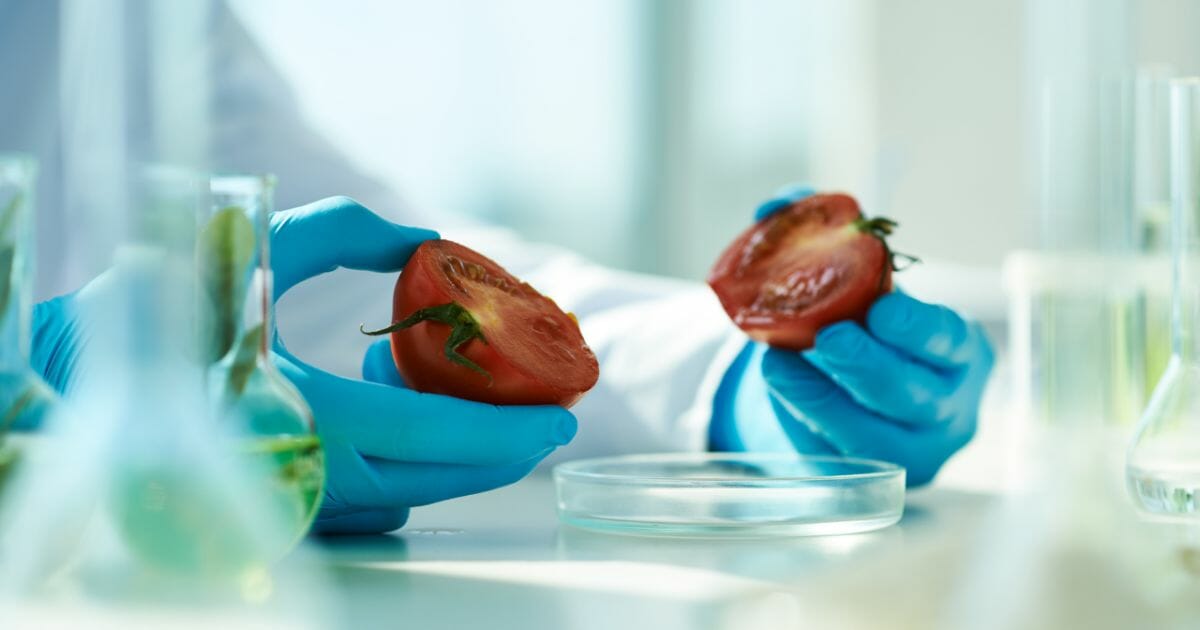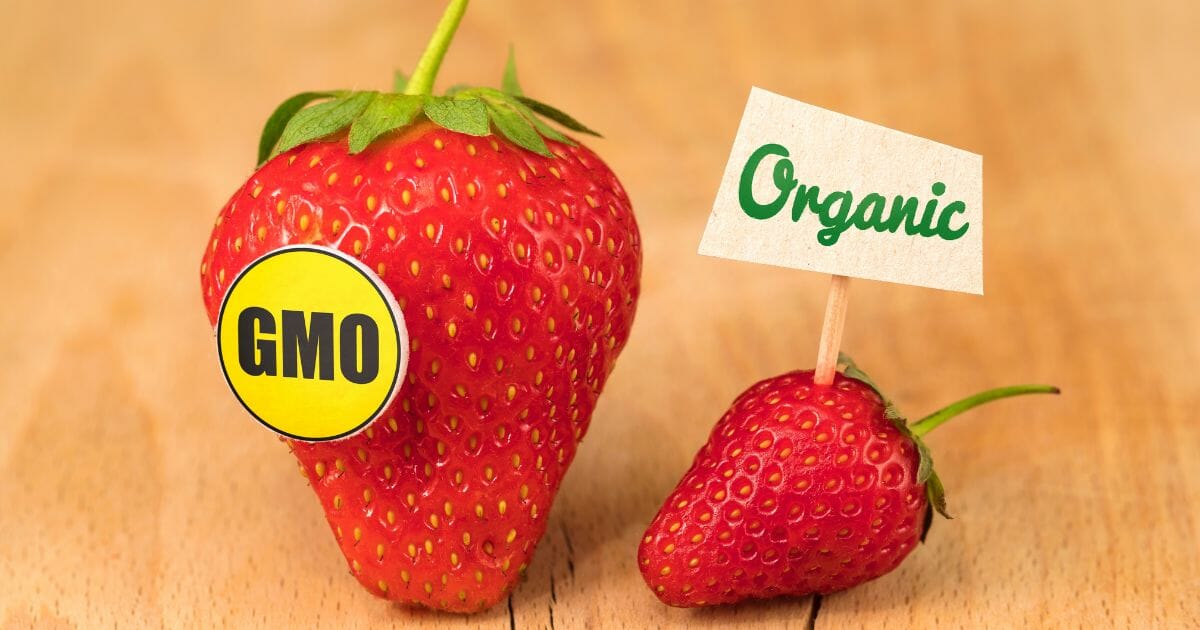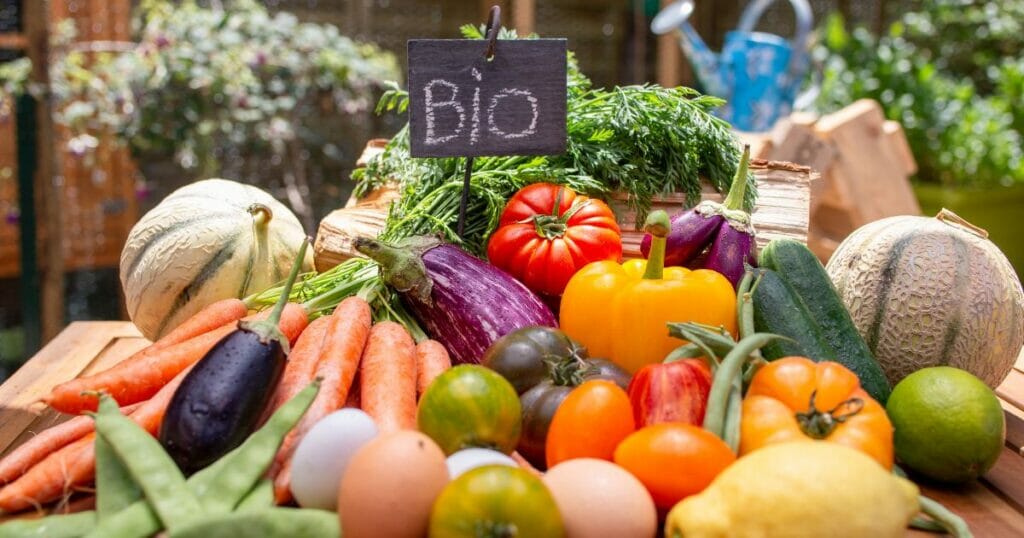SeaRanchLodge.com is a participant in the Amazon Associate program and will earn from qualifying purchases.
The debate about genetically-modified foods has been raging for decades. Although the first recorded attempts at altering genetic material in human food were in the late 20th century, humans have been modifying food for centuries, beginning with the process of selective breeding and domesticating animals and plants, both around 10,000 BC.
However, it was only after scientists discovered ways to modify DNA that the world delved into a rich tradition of creating bioengineered food.
As the process became more mainstream, consumers worldwide were alerted to health concerns because genetically modified organisms (GMOs) were being used for commercial food production.
This, coupled with the legal requirements surrounding GMOs, created panic among consumers who worried about GMO-derived foods as something potentially harmful to their health.
In this article, we’ll help you understand exactly what is bioengineered food, the myths and concerns surrounding them, and what we can expect in the future.
What is Bioengineered Food?

Bioengineered food is plants or crops grown for food with alterations made to their genes through genetic engineering. In some instances, genes from different organisms are inserted into the genome – or the DNA – of the food being modified. The bacterium bacillus thuringiensis is used for gene modification.
There’s nothing too complex or insidious behind genetically modified foods. The initial purpose of GMOs was to prevent food scarcity in a rapidly expanding human population due to lower mortality rates in the face of better healthcare.
GMO crops offer higher yields than conventional foods or crops, which means they are more profitable and can meet the growing demand for food, especially in a globalized world that depends on cooperation for the smooth exchange of goods.
Some industrial nations can’t produce their own raw material used to manufacture processed goods so they have to rely heavily on agrarian nations. Countries like China, whose development and progress have been unmatched, were among the first to use widespread GMOs to grow virus-resistant crops.
Crops like canola, cotton, maize, and soybeans are some of the most widespread bioengineered crops. Without genetic engineering, the world’s population could face adverse effects in terms of food scarcity.
GMO production has and continues to change our relationship with food manufacturers, the environment, human consumption, and the planet’s future. Let’s take a look at why that is.
The Benefits of Bioengineered Food
There are several benefits of bioengineered foods. Many crops, including those for food and non-food materials, suffer from natural calamities that reduce yield, influence market prices, and affect consumption worldwide.
One of the issues faced by farmers and food producers globally – especially if they use conventional breeding – is the alarming number of diseases and pests that destroy crops.
While insecticides, chemical pesticides, and medicine are options for large-scale and commercial production, they incur higher production costs, put farmers and consumers at risk, pollute the environment (including the soil and water bodies), and are not time effective.
Measures to save crops can disturb local ecosystems by harming the food chain, and birds, pollinators, and other useful organisms suffer. Without GMOs, we risk losing biodiversity.
Moreover, weeds can damage crop yields, and weed killers can damage crops too. Plants can be modified to resist weeds, a highly useful endeavor for the food industry. As mentioned above, we need virus-resistant varieties to make the most of crop yields.
Many crops aren’t only susceptible to diseases but also to extreme weather conditions like heat, frost, and snow. Bioengineering food is useful in this case, especially in light of climate change.
All of this can and has been solved by GMOS. However, there are some issues we need to consider regarding bioengineered foods as well.
The Downsides of Bioengineered Food
One of the shortcomings of bioengineered food is just how little we know about it. We can’t say for sure what long-term effects genetic modification will have on the environment and human health.
Some countries have banned GMO crops because it’s not yet known how they react as a result of interaction with non-GMO crops.
While GMOs are proposed as a solution to world hunger, that’s not entirely true. Firstly, most of the crops produced are not food but are aimed towards ethanol or corn syrup production, a leading cause of obesity and other health issues. These are commodity crops and they contribute to food waste.
World hunger itself isn’t due to food shortage but rather logistical issues, infrastructural problems, and, soon, climate change.
Secondly, while bioengineered foods perform better than conventional crops, it’s only by a few degrees and nothing miraculous. At this point, we need a lot more information on GMOs to come to a certain conclusion.
Lastly, there are fears related to losing out on biodiversity if we keep producing only a limited kind of food that would raise
Public Response and Disclosure Requirements

A large chunk of American society considers GMOs to be dangerous, poisonous food that can result in allergenic effects and other health hazards. There’s a demand for non-GMO food supply and non-GMO projects that have popped up.
The US Department of Agriculture has implemented food disclosure laws, meaning food labeling must include bioengineered labels. This has raised concerns with food manufacturers, who believe such labeling could impact the consumer base.
To some extent, the labeling issue has been caused by a different kind of label. Some food products clearly state that they are not GMOs, which curates and reinforces the negative opinion on GMOs.
Frequently Asked Questions
1. Are organic foods safer than GMOs?
Although many people claim organic foods are safer to consume than genetically modified foods, there is currently no real evidence that can prove this claim.
When food producers claim to sell organic food, the label entails not using any synthetic or chemical fertilizers, insecticides, or pesticides on the crop. It also means the crop was not genetically modified in any way or form.
Organic foods provide the same nutrition, however, in the case of food items like golden rice that are modified to include extra nutrients, GMOs would offer more health benefits.
2. Why is organic food expensive?
The cost of growing food organically is much higher than growing it on conventional farms. This is because organic farming requires natural fertilizer and more traditional labor methods that involve tilling, harvesting, and everything in between.
Organic farms also require federal certification, but it’s mostly the low crop yield or output that makes the product more expensive in comparison to conventional farm products. In addition to that, the products that go into making organic food are clean, expensive products, unlike conventional food that can include ingredients like corn syrup.
Lastly, organic farms don’t receive the kind of subsidies conventional farming does from the U.S. government.
3. What is the number one GMO food?
The most common GMO is corn. The GMO variety of corn is mainly made to fight against pests.
Final Thoughts
So, what is bioengineered food? Bioengineered food is plants or crops grown for food with alterations made to their genes through genetic engineering. It can change the way we produce and consume food, mostly depending on sustainable practices.
While it can contribute greatly to better crop yields and more desired varieties, we still need to think about long-term effects and what GMOs mean for the future.
Stick around to read much more about exciting kitchen hacks and all of the best accessories to make your life easier!


